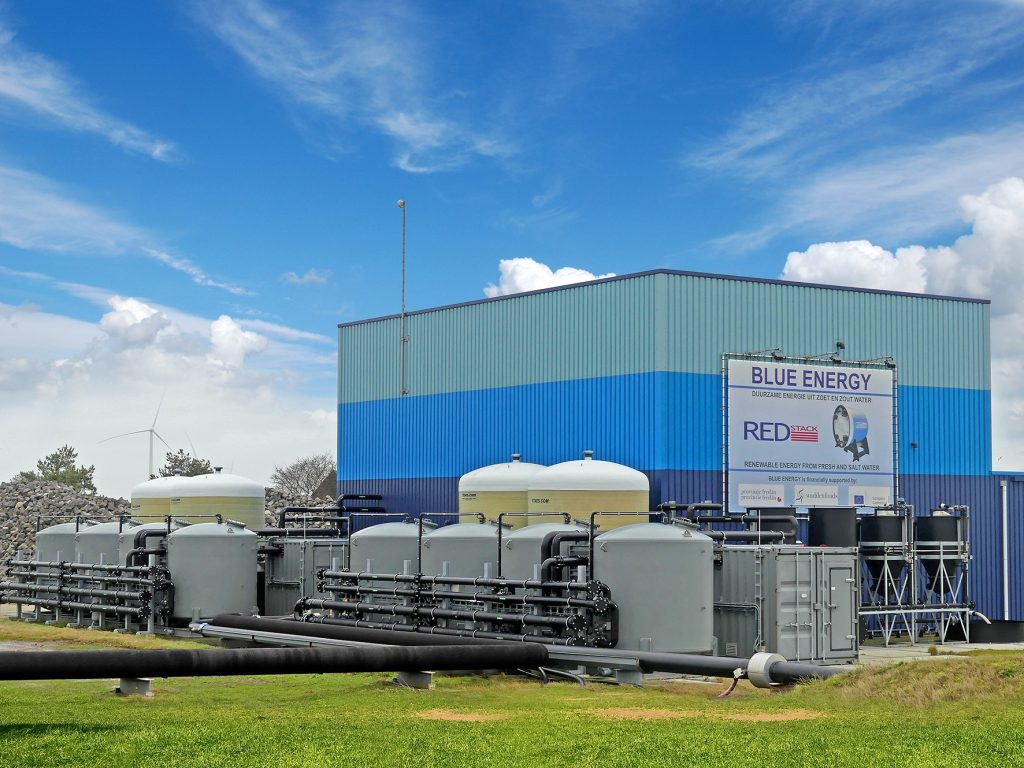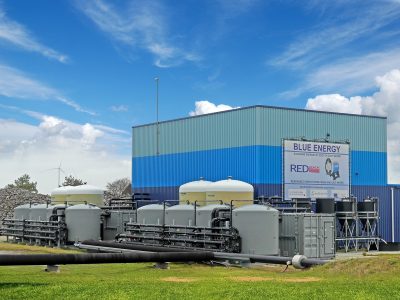The Wadden Fund supports the construction of a new power plant on the Afsluitdijk with € 4,904,022. Here, a 16.5 kW power plant will generate sustainable energy by mixing fresh and salt water. The new plant is being built by REDstack B.V., which already set up a small pilot plant for generating "blue" power in 2014. The new Blue Energy plant should demonstrate that it is technically feasible to generate green/blue energy on an even larger scale in a vulnerable nature reserve like the Wadden Sea. The installation requires a total investment of €11,134,707.
The CO2-free energy is generated as fresh and salt water are separated by a membrane - in the so-called RED stack - which generates sustainable electricity based on ion exchange between fresh and salt water. At the end of the process, fresh IJsselmeer water and salt Wadden Sea water are mixed and returned to the sea as brackish water. This brackish water flow can start to contribute to increasing natural values such as increasing the lure flow for (migratory) fish and a gradual fresh-salt transition. The company REDstack took its name from the 'stacks'. The Blue Energy plant will produce 132,000 kWh per year. The plant accounts for an annual reduction of over 19.8 tons of CO2 emissions.
It is also investigating whether the brackish water discharged after the run-through production process can have positive effects on underwater nature and, in particular, on fish migration. Furthermore, REDstack is researching the application of new techniques for water intake and water return. The new techniques should start to reduce as much as possible the ecological damage to zooplankton, fish larvae, shellfish and fish eggs that currently occurs when water is taken in by industries in the Wadden ports. The company is working with several companies located in the Wadden ports that collectively take 188.6 m3 of water per second from the Wadden Sea. The intention is that after successful completion of the pilot, those companies will also apply the new techniques. This will contribute to improving the underwater nature of the Wadden Sea.
The project contributes to sustainable economic development in the Wadden area by developing a partially automated assembly line for the industrial production of the membranes. The continuous 24/7 production of sustainable electricity will also contribute to a sustainable energy transition. In doing so, it should become clear that the extraction of "blue" energy can be done responsibly in the vulnerable Wadden area. By further developing and applying new techniques and knowledge, it may be possible in the future to scale up to a 100 MW installation on the Afsluitdijk. This will then produce 830,000,000 kWh of electricity, enough for about 150,000 households in Friesland and North Holland.

